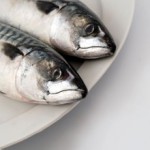 A team of international scientists working in the central Pacific have discovered that coral which has survived heat stress in the past is more likely to survive it in the future.
A team of international scientists working in the central Pacific have discovered that coral which has survived heat stress in the past is more likely to survive it in the future.
The study, published on March 30 in the journal ‘PLoS ONE’, paves the way towards an important road map on the impacts of ocean warming, and will help scientists identify the habitats and locations where coral reefs are more likely to adapt to climate change.
“We’re starting to identify the types of reef environments where corals are more likely to persist in the future,” says study co-author Simon Donner, an assistant professor in UBC’s Department of Geography and organizer of the field expedition. “The new data is critical for predicting the future for coral reefs, and for planning how society will cope in that future.”
When water temperatures get too hot, the tiny algae that provides coral with its colour and major food source is expelled. This phenomenon, called coral bleaching, can lead to the death of corals.
With sea temperatures in the tropics forecast to rise by 1-3 degrees Celsius by the end of the century, the researchers say coral reefs may be better able to withstand the expected rise in temperature in locations where heat stress is naturally more common. This will benefit the millions of people worldwide who rely on coral reefs for sustenance and livelihoods, they say.
“Until recently, it was widely assumed that coral would bleach and die off worldwide as the oceans warm due to climate change,” says lead author Jessica Carilli, a post-doctoral fellow in Australian Nuclear Science and Technology Organization’s (ANSTO) Institute for Environmental Research. “This would have very serious consequences, as loss of live coral – already observed in parts of the world – directly reduces fish habitats and the shoreline protection reefs provide from storms.”
Caralli and Donner conducted the study in May 2010 in the Pacific island nation of Kiribati, near the equator. Kiribati’s climate is useful for testing theories about past climate experience because its corals are pounded by El Niño-driven heat waves, while corals on the islands farther from the equator are less affected.
The researchers analyzed coral skeletal growth rates and tissue fat stores to compare how corals from different regions responded to two recent coral bleaching events in 2004 and 2009.
Donner has conducted field research in Kiribati since 2005 and will return this year to conduct follow-up research with the local government. He says the findings suggest that Marine Protected Areas – conservation areas designed to protect marine life from stressors like fishing – may be more effective in areas with naturally variable water temperatures.
The research delivers mixed news for Australia’s Great Barrier Reef, because the reef stretches over such massive distances; some areas have stable temperatures and some do not. The findings support previous laboratory and observational studies from other regions, suggesting they can be widely applied.
Planning is now underway for potential future studies of coral in areas of the world that have not experienced significant historical changes in water temperatures.
“Even through the warming of our oceans is already occurring, these findings give hope that coral that has previously withstood anomalously warm water events may do so again,” says Carilli. “While more research is needed, this appears to be good news for the future of coral reefs in a warming climate.”
Details of the Study:
Source: The University of British Columbia (UBC).












